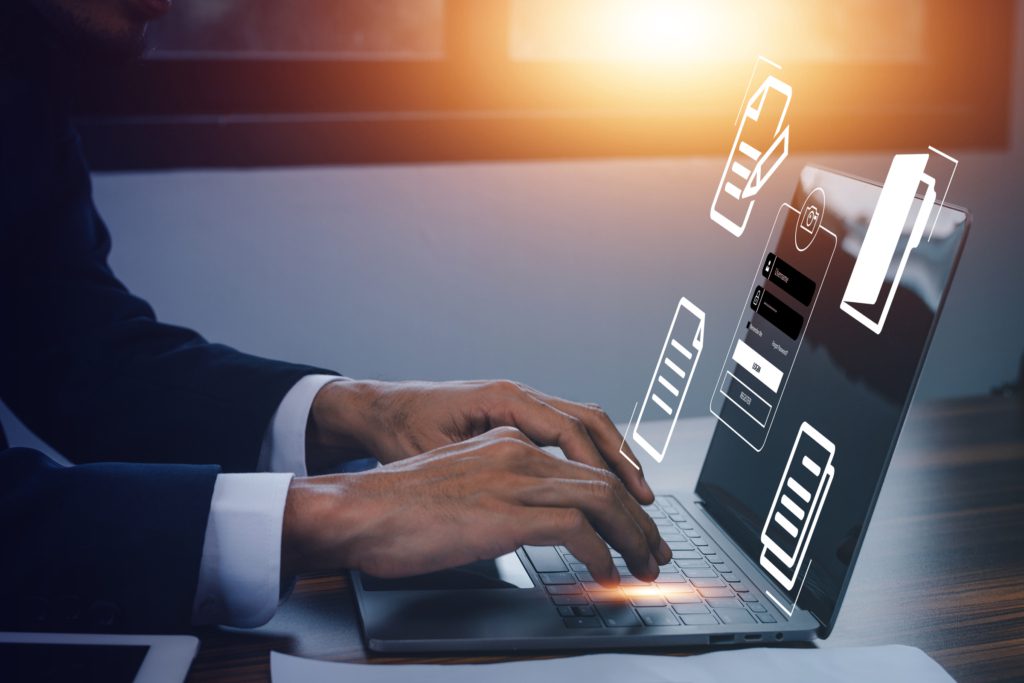
Virtual Data Room Security Feature: Everything you need to know
Virtual Data Rooms or virtual deal rooms are secure online solutions used store and share sensitive data. Since their introduction, VDRs have found various applications across industries, thanks to their strong security features and user-friendly data management. Let’s explore some common use cases for VDR solutions.
- Mergers and Acquisitions (M&A): VDRs serve as secure and efficient platforms for all parties involved in accessing sensitive information during M&A transactions. This includes contracts, financial tables, and due diligence materials, reducing the risk of breaches and expediting the transaction process.
- Legal Proceedings: Lawyers often utilize VDRs to securely share confidential documents with clients and other involved parties in legal cases. This not only ensures the security of privileged information but also simplifies overall case management.
- Financial Data Management: Financial institutions can leverage VDRs to handle large volumes of sensitive data securely. This helps in ensuring secure transactions and protecting crucial financial information from cyber threats.
- Healthcare Clinical Trials: VDRs enable researchers and administrators in the medical, pharmaceutical, and life sciences fields to securely exchange patient data, research findings, and regulatory documents while adhering to stringent data privacy standards.
- Due Diligence Process:
In these and various other scenarios, VDRs offer numerous advantages such as: secure file sharing. They provide unparalleled data security, support efficient data management, and streamline processes by facilitating secure document sharing.
What is data breach ?
A data breach occurs when confidential data as well as sensitive, or protected information is exposed to an unauthorized person, allowing them to access the data and/or share files without permission.
Everyone, from individuals to large enterprises and governments, is susceptible to the risk of a data breach. It’s crucial to recognize that not only can individuals fall victim to breaches, but they can also inadvertently jeopardize others if proper protective measures are not in place.
Typically, breaches result from vulnerabilities in:
- Technology
- User behavior
Fixing a breach isn’t just about changing passwords. When your data gets leaked, it can cause long-lasting problems for your reputation, money, and more.
- For businesses: A data breach can really hurt a company’s reputation and money situation. Think of cases like Equifax, Target, and Yahoo – people often remember them for the breach, not their regular business.
- For governments: When data is exposed, secret government stuff might end up in the wrong hands. This could be a big problem for military things, politics, and important national stuff.
- For regular users: A breach could lead to identity theft. If your personal info, like social security or bank details, gets out, bad guys can pretend to be you. This can mess up your credit, cause legal issues, and it’s tough to fix.
Why Virtual Data Rooms Secure Feature is Critical ?
Keeping information safe is super important for companies and people. A secure VDR is like a digital safe for important stuff. Companies use it to protect things like secret reports, important business ideas, and private info about their workers and clients. For regular people, it keeps personal stuff safe, like credit card details and medical records.
This security uses fancy technology to lock up the information really well, so only the right people can see it. It’s like building a strong digital wall around all the important data. This doesn’t just make things safe; it also helps companies earn trust from their clients.
Besides helping secure data, security is crucial to follow the rules. There are strict laws about how companies should protect information. Having good security helps companies follow these rules and avoid getting into trouble. So, security is not just about locking up data; it’s also about building trust and following the important rules.
Key Components of Security for VDRs
The security of a Virtual Data Room (VDR) depends on various essential components, each serving specific functions. Let’s break them down for a clearer understanding.
- Encryption in Transit and at Rest: This ensures data is securely encoded during transmission and storage, making intercepted data unreadable to unauthorized parties.
- Multi-Factor Authentication: Adds an extra layer of security, requiring more than one method of authentication before granting access.
- Access Controls: Mechanisms that determine which users can access specific information and when, crucial for managing access to sensitive data.
- Audit Logs: Essential for tracking all VDR activities, recording who accessed what data and when, ensuring accountability and aiding security investigations.
- Monitoring and Tracking of File Activity: Monitors and records all actions related to files within the VDR, providing visibility into activities and identifying suspicious or unauthorized actions.
- Automatic Backup and Recovery Systems: Regularly backs up data and ensures recovery in case of data loss or breaches, offering a safety net for unexpected incidents.
- Data Loss Prevention: Helps prevent data loss due to accidental deletion or cybersecurity threats through regular backups and easy data recovery.
- Data Segregation: Involves separating and storing data based on criteria like sensitivity and user access to prevent unauthorized access, maintaining data integrity and confidentiality.
- Intrusion Detection Systems: Uses software or hardware to monitor networks or systems for malicious activity, reporting and taking necessary actions to mitigate risks when detected.
In addition to these features, a user-friendly interface is crucial for a VDR solution, ensuring robust security while maintaining ease of use for all users. Without this, users may resort to using less secure, unauthorized solutions for sharing sensitive content.
What are Virtual Data Room Certifications for Security and Compliance?
Certifications offer an easy way to gauge VDR security. Some certifications related to data room safety include:
- SOC 2: A voluntary standard crafted to set boundaries around organizations’ use of customer data.
- FINRA compliance: A securities industry standard aimed at improving transparency and streamlining SEC reporting.
- ISO 27081: The first-ever standard developed specifically to support cloud computing security standards.
If you spot these certifications/standards on a company’s software or virtual data room products, it signals that they’ve taken measures to ensure secure information handling, possibly even audited by an independent third party.
Practice Virtual Data Room Security
Securing a virtual data room (VDR) is a complex task that needs careful planning and strategy. To start, you must assess your existing data protection measures thoroughly. This evaluation helps find any potential weaknesses in your systems.
Once you identify these weaknesses, you can choose a suitable VDR solution to address them. This choice should consider factors like ease of use, scalability, cost-effectiveness, and compatibility with existing systems. These factors significantly impact the performance of your chosen VDR solution.
But choosing the right VDR isn’t the end of the process. It’s crucial to invest in comprehensive employee security awareness training to ensure your team adopts the new system successfully. This involves educating them about data security importance, explaining risks and impacts of breaches, and guiding them on how to use the VDR securely.
Regular audits are also essential to maintain a secure VDR. These audits assess your security measures regularly, ensuring they stay strong and up-to-date. System upgrades are equally vital.
As technology evolves and new threats emerge, regularly upgrading your VDR solution is crucial to maintaining its security effectiveness. This combined approach ensures your VDR security stays resilient, reliable, and effective in protecting sensitive data.
The Role of User Training in Enhancing VDR Security
Effectively countering cybersecurity issues extends beyond relying solely on security software. Cybersecurity awareness plays a crucial role in determining how effectively an organization utilizes a virtual data room (VDR). Unfortunately, many organizations fall short in this aspect, with up to 56% of surveyed leaders acknowledging a lack of cybersecurity awareness among their employees. The survey further reveals that 81% of cyberattacks stem from issues such as phishing, passwords, and malware – consequences often linked to inadequate security training.
Consequently, training becomes a pivotal element when implementing a virtual data room. It yields the following benefits:
- Improved Data Room Security: Enhances your proficiency with the VDR, enabling you to leverage robust security measures to their fullest extent.
- Increased Productivity: Reduces learning curves for administrators and regular users, subsequently boosting employee productivity. Skilled VDR users spend less time navigating the system and managing files.
- Optimized Accessibility vs. Security Balance: Elevated VDR skills empower you to utilize the full potential of security features without concerns that data-protecting measures hinder user access. This ensures effective and secure collaboration.
Top 5 Best Virtual Data Room Providers in 2024
Key Takeaways
- A secure virtual data room is like a super tool to manage data securely.
- Even though virtual data rooms have super strong security, they might not work well if people using them don’t know much about keeping things safe online.
- The usual problems with VDR security are tricks like phishing and not setting up access to online documents and files correctly.
- Virtual data rooms use really strict rules to handle sensitive data. If you use them the right way, they can protect data from most ways bad guys try to get it about 71% of the time.
- Learning how to use virtual data rooms is a must for keeping data safe.
- Businesses should look into different virtual data rooms and read reviews to make sure they work well for everyone. They should purchase for premiere security choice for clould storage if needed.


